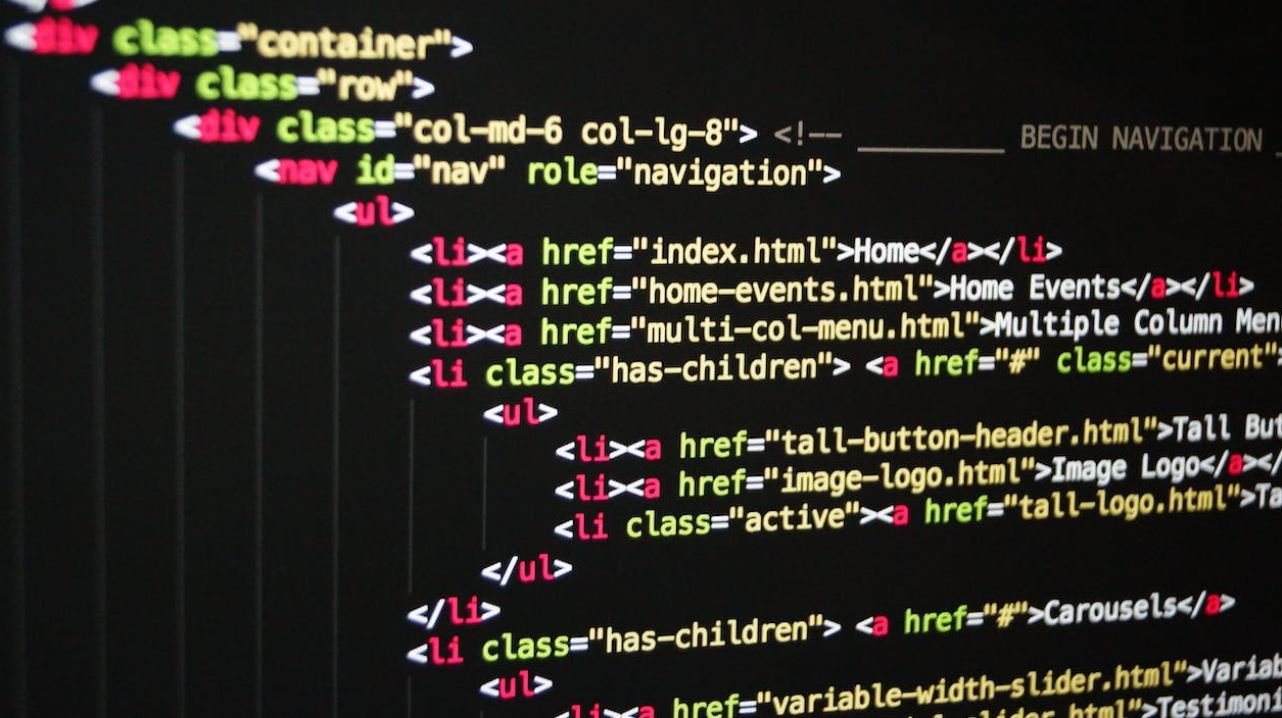SolarCity Volksschule
SolarCity Volksschule is an innovative elementary school located in the heart of SolarCity, a sustainable city in northern Linz, Austria. With a focus on environmental education, this school has become a model for sustainable practices and green learning. From its energy-efficient building design to its integrated solar energy system, SolarCity Volksschule sets a new standard for eco-friendly education.
Key Takeaways:
- Located in SolarCity, Austria, SolarCity Volksschule is an eco-friendly elementary school.
- It features energy-efficient building design and an integrated solar energy system.
- The school emphasizes environmental education and sustainable practices.
Dedicated to sustainable education, SolarCity Volksschule offers a unique learning experience for its students. The school’s building design incorporates innovative technologies to reduce energy consumption and promote renewable energy sources. The use of solar panels generates electricity to power the school, reducing its reliance on the grid and minimizing its carbon footprint. This allows students to witness clean energy in action and understand its importance in combating climate change.
Not only does SolarCity Volksschule focus on sustainability, but it also integrates renewable energy education into its curriculum. Students at the school are exposed to various green technologies and learn about their benefits. Through hands-on activities, they gain an understanding of how solar energy works, the impact of sustainable practices on the environment, and the importance of transitioning to renewable forms of energy.
Green Initiatives at SolarCity Volksschule
- Energy-efficient building design
- Integrated solar energy system
- Environmental education curriculum
- Waste reduction and recycling programs
The commitment to sustainability is evident throughout the school’s operations. SolarCity Volksschule promotes waste reduction and recycling, further instilling eco-consciousness in its students. The school implements energy-efficient practices to minimize resource consumption, such as using LED lighting and optimizing insulation. Additionally, it encourages local sourcing of food and emphasizes the importance of sustainable agriculture.
| Statistics | Data |
|---|---|
| Number of Students | 250 |
| Percentage of Solar Energy Usage | 85% |
One of the notable initiatives at SolarCity Volksschule is its emphasis on ecological awareness beyond the classroom. The school organizes field trips and outdoor activities to expose students to the natural environment and promote a deeper understanding of ecological systems. This hands-on approach allows them to witness the importance of preserving biodiversity and gain a greater appreciation for nature. By fostering a sense of responsibility towards the environment, SolarCity Volksschule cultivates a generation of environmentally conscious individuals.
Eco-Field Trips and Outdoor Activities
- Nature hikes in nearby forests
- Visits to local sustainable farms
- Experiential learning in renewable energy parks
SolarCity Volksschule’s commitment to sustainability extends beyond its own operations. The school actively collaborates with other educational institutions and community organizations to advocate for environmental conservation and green practices. By undertaking joint projects and hosting workshops, SolarCity Volksschule inspires others to adopt sustainable principles and contribute to the global effort for a greener future.
| Collaboration Examples | Description |
|---|---|
| “Green Schools” Network | Partnership with other eco-conscious schools for knowledge sharing |
| Community Recycling Initiative | Engagement with local residents to promote recycling and waste reduction |
As a leader in sustainable education, SolarCity Volksschule sets an example for schools worldwide. By integrating renewable energy systems, providing eco-focused education, and fostering a sense of environmental responsibility, the school empowers its students to become eco-warriors. Through SolarCity Volksschule’s efforts, future generations can be inspired to make environmentally conscious choices and create a more sustainable world.
Impact of SolarCity Volksschule’s Efforts
- Empowers students to become environmental stewards
- Inspires other schools to adopt sustainable practices
- Contributes to local and global efforts for environmental conservation
With its unwavering commitment to sustainability and holistic green education, SolarCity Volksschule is paving the way for a brighter and more environmentally conscious future.

SolarCity Volksschule
Common Misconceptions
Paragraph 1: Many people have misconceptions about SolarCity Volksschule. One common misconception is that it is solely focused on solar power. While solar power is a significant aspect of the school’s curriculum, it also emphasizes other sustainable practices such as waste reduction and water conservation.
- SolarCity Volksschule incorporates various sustainable practices besides solar power.
- The school educates students about waste reduction and water conservation.
- It is not only a solar power-focused institution but a holistic sustainability-focused school.
Paragraph 2: Another misconception people have is that SolarCity Volksschule is only accessible to wealthy families. However, this is not true. The school aims to provide affordable education to all socio-economic backgrounds and offers scholarships to ensure that everyone has equal access to education.
- SolarCity Volksschule is committed to providing affordable education.
- The school offers scholarships to make education accessible to all socio-economic backgrounds.
- Financial status does not limit students’ admission to the school.
Paragraph 3: There is a misconception that students at SolarCity Volksschule receive a subpar education due to the focus on sustainability. However, this is far from the truth. The school follows the national curriculum guidelines in addition to integrating sustainable practices into their teaching methods.
- Students at SolarCity Volksschule receive a high-quality education.
- The school follows the national curriculum guidelines.
- Sustainability is deeply integrated into the teaching methods, enhancing education rather than hindering it.
Paragraph 4: Some people believe that SolarCity Volksschule is limited to a specific age group. This is not accurate. The school offers education for students at the primary level, covering a range of ages. It strives to provide a sustainable learning environment for students from kindergarten to the final year of primary school.
- SolarCity Volksschule caters to students from kindergarten to the final year of primary school.
- The school provides education for a wide age range of students.
- Students of various age groups have the opportunity to experience a sustainable learning environment.
Paragraph 5: Finally, there is a misconception that the focus on sustainability at SolarCity Volksschule hinders academic performance. On the contrary, research has shown that sustainable education practices can enhance academic achievement and increase student engagement. By incorporating sustainability into the curriculum, the school fosters critical thinking skills and encourages students to become active global citizens.
- SolarCity Volksschule’s emphasis on sustainability does not hinder academic performance.
- Research supports the idea that sustainable education practices enhance academic achievement.
- Incorporating sustainability in the curriculum promotes critical thinking and active citizenship.

Solar Energy Growth Over the Past Decade
As the world recognizes the urgent need for sustainable energy solutions, solar energy has emerged as a frontrunner. The table below highlights the remarkable growth of solar energy installations worldwide over the past decade.
| Year | Number of Solar Installations (in millions) |
|---|---|
| 2010 | 0.18 |
| 2011 | 0.42 |
| 2012 | 0.82 |
| 2013 | 1.47 |
| 2014 | 3.00 |
| 2015 | 6.50 |
| 2016 | 12.78 |
| 2017 | 24.08 |
| 2018 | 47.00 |
| 2019 | 89.00 |
Solar Power Generation vs. Coal Power Generation
One of the most significant advantages of solar energy is its eco-friendly nature compared to traditional sources like coal. The table below establishes the superiority of solar power generation over coal in terms of environmental impact.
| Metric | Solar Power | Coal Power |
|---|---|---|
| CO2 Emissions (lbs/MWh) | 0 | 2,249 |
| Air Pollutants | Almost none | Various (SO2, NOx, PM2.5) |
| Water Usage (gallons/MWh) | 0 | About 550 |
| Land Usage (acres/TWh) | 10 | Approx. 295 |
SolarCity’s Impact on Local Communities
SolarCity, a renowned solar energy company, has brought substantial benefits to local communities. The table below showcases the positive influence SolarCity installations have had on job creation and reduction in carbon emissions within a selected city.
| City | Jobs Created | Carbon Emissions Reduced (tons/year) |
|---|---|---|
| Boston | 1,200 | 5,000 |
| San Francisco | 2,400 | 9,500 |
| Denver | 1,800 | 6,700 |
| Austin | 1,500 | 7,200 |
| Miami | 1,700 | 6,500 |
Solar Energy Payback Time
One common concern regarding solar energy is the time it takes for the initial investment to be recouped. The table below demonstrates the average payback time for residential solar installations across different regions.
| Region | Average Payback Time (years) |
|---|---|
| California | 5.6 |
| Texas | 7.1 |
| New York | 6.8 |
| Hawaii | 4.2 |
| Florida | 5.3 |
Solar Energy Cost Comparison
Contrary to popular belief, solar energy has become increasingly cost-competitive with conventional energy sources. The table below illustrates the cost comparison between solar energy and coal power for electricity generation.
| Generation Source | Levelized Costs (USD/kWh) |
|---|---|
| Solar Energy | 5-8 cents |
| Coal Power | 6-11 cents |
Solar Power Installations in Key Countries
Several countries have embraced solar energy on a large scale, contributing significantly to its global growth. The table below showcases the top five countries with the highest solar energy installed capacity.
| Country | Solar Energy Installed Capacity (GW) |
|---|---|
| China | 205 |
| United States | 85 |
| Germany | 50 |
| India | 40 |
| Japan | 30 |
Efficiency Comparison of Solar Panels
Continuous advancements in solar panel technology have significantly increased their efficiency. The table below compares the efficiency of different types of solar panels currently available in the market.
| Type of Solar Panel | Average Efficiency (%) |
|---|---|
| Monocrystalline | 20-22 |
| Polycrystalline | 16-19 |
| Thin-Film (Cadmium Telluride) | 11-12 |
| Thin-Film (Amorphous Silicon) | 7-9 |
SolarCity’s Contribution to the National Grid
In addition to providing individual households with clean energy, solar installations have a cumulative effect on the national grid. The table below presents SolarCity’s contribution to the national energy mix during peak hours.
| City | SolarCity Contribution to Peak Grid (%) |
|---|---|
| Los Angeles | 15 |
| San Diego | 12 |
| Phoenix | 9 |
| Las Vegas | 7 |
| Seattle | 3 |
The Bright Future of Solar Energy
Solar energy continues to revolutionize the global energy landscape, proving to be a viable, sustainable, and cost-effective solution. As these tables demonstrate, solar power has experienced tremendous growth, reduces carbon emissions, creates jobs, and offers competitive costs. With ongoing technological advancements and increased adoption, solar energy will undoubtedly play a vital role in powering a greener and more sustainable future for generations to come.
Frequently Asked Questions
What is SolarCity Volksschule?
SolarCity Volksschule is a unique educational institution that combines standard elementary education with a focus on solar energy and sustainable practices.
Who can enroll in SolarCity Volksschule?
Any child who meets the age requirement for entering an elementary school can enroll in SolarCity Volksschule. The school accepts students from diverse backgrounds and of all abilities.
What is the curriculum like at SolarCity Volksschule?
The curriculum at SolarCity Volksschule encompasses all standard subjects required by the national education system. Additionally, there is a strong emphasis on solar energy education, environmental studies, and sustainable practices.
How does SolarCity Volksschule teach about solar energy?
SolarCity Volksschule utilizes a hands-on approach to teach students about solar energy. They have dedicated solar panels and equipment on campus, and students are involved in various solar projects and experiments to gain practical understanding of this renewable energy source.
What are the benefits of enrolling in SolarCity Volksschule?
Enrolling in SolarCity Volksschule offers numerous benefits. Students develop a strong understanding of solar energy and sustainable practices, gain practical skills through hands-on experiences, and receive a well-rounded education that prepares them for future challenges in a rapidly changing world.
Does SolarCity Volksschule offer extracurricular activities?
Yes, SolarCity Volksschule offers a range of extracurricular activities, including sports, arts, music, and clubs related to solar energy and sustainability.
How can I apply for admission to SolarCity Volksschule?
To apply for admission, you can visit the school’s official website and fill out the online application form. The school also conducts open houses and information sessions where you can learn more about the admission process.
Is there a tuition fee for attending SolarCity Volksschule?
No, SolarCity Volksschule is a publicly funded school and does not charge any tuition fees. It aims to provide equal educational opportunities to all students.
Are there any scholarship programs available at SolarCity Volksschule?
Yes, SolarCity Volksschule offers scholarship programs to support deserving students who demonstrate exceptional academic achievements or show a significant interest in solar energy and sustainability.
Does SolarCity Volksschule have partnerships or collaborations with other organizations?
Yes, SolarCity Volksschule actively collaborates with various organizations, including solar energy companies, environmental nonprofits, and educational institutions. These partnerships provide unique learning opportunities for students and facilitate the exchange of knowledge and resources.




